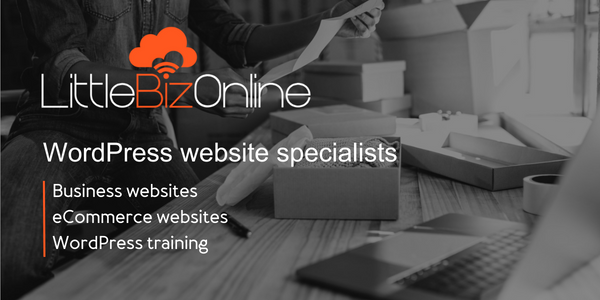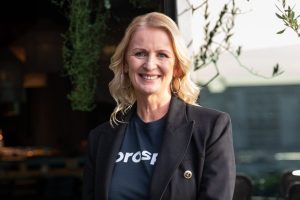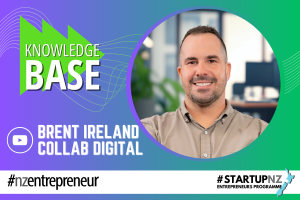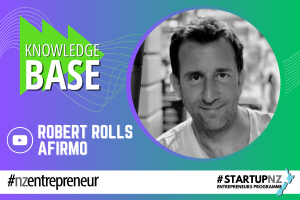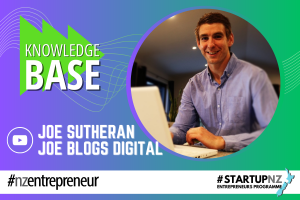Opinion: As an entrepreneur, avoiding rejection isn’t an option

Somehow, in the annals of time gone by, when the notion of business building was in its infancy, a rule was decreed that for every ‘yes’ a business leader got in their quest to build their dream, they would be discouraged by a simply crushing number of ‘no’s’.
And it was so that negativity became the foundation of this career path for all eternity, rendering the journey of the entrepreneur, fraught with the merciless onslaught of rejection and rebuff. Sound familiar?
The word ‘no’ is most likely the first word that we learn to recognise as small children and whilst it is often said with the best of intentions by our caregivers as they want us to survive past an early age, it results in early programming that is largely negative. Such negative programming, unfortunately, teaches us very early in our development to temper our actions to avoid the dreaded word ‘no’ at all costs.
When I was building my educational publishing company, I found that getting past ‘no’ was counterintuitive, but stopping in my tracks just wasn’t an option in the pursuit of traction. With this almost desperate persistence, I learned quickly that ‘no’ very seldom meant just ‘no’. In most cases it actually meant; ‘just not now’, ‘its too early/late for our budget’, ‘we have been using the same book for years and don’t see the need to change’, ‘one of our teachers has written the book we use’, ‘you look too much like my husbands ex girlfriend’ or ‘I would really rather go and drink tea in the staff room than stand here and talk to you’.
I found that if I could get to the bottom of what ‘no’ actually meant then I had an idea of what to do next and how to re-approach the prospect at the appropriate time, in the appropriate way. This process took a lot of patience, a very thick skin and wilful insight. We had to bear in mind that we started our company in turbulent political times in a country when most of our clients were overcome with a tidal wave of uncertainty and pending change.
As we grew and my skills developed, I learned more quickly about how to avoid rejection right from the start as well as move on from it effortlessly and efficiently.
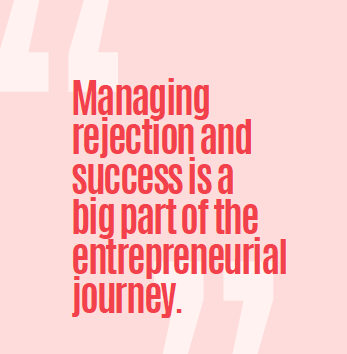 Once I became adept at refining and teaching this hard-won learning to my sales team, we grew steadily and exponentially. For a time, I almost forgot how big a deal rejection had once been to me.
Once I became adept at refining and teaching this hard-won learning to my sales team, we grew steadily and exponentially. For a time, I almost forgot how big a deal rejection had once been to me.
When I started EnQPractice rejection became an enormous part of my professional life again. The personal nature of rejection was also far worse as the concept of Entrepreneurial Intelligence is my creation, and not a product that someone else has written or developed. The gatekeepers in the industry for professional development are ruthless and not afraid to offend. They brutally question authenticity, relevance, gender and nationality to find the most formidable and soul crushing ‘no’ to come back from. And rejection, unlike objection, is not a show of interest.
It is a short and often vicious, punch to the guts of what you are offering, simply to make you go away and lessen the load on the desk of the gatekeeper. Do I blame them?
In most cases, no. With the sheer numbers of people in my industry knocking on their doors that are relevant, they are completely overwhelmed. Never mind the gazillion others who are not relevant or simply bombarding them with spam email and cold calls in a vague hope that one hits home. But I keep going because I believe in the value of the offering.
My long-winded point is that to grow a business or practice of any kind we have to make peace with the passenger ‘rejection’, who is going to take their seat in our vehicle of business growth, alongside tenacity, vision and commitment, invited or not and tolerated or not.
Here are five ways I have managed to keep ‘rejection’ firmly buckled into their seat in my vehicles, out of my focus and far enough away from the handbrake to not be able to reach for it, just as I am gathering speed:
One: Understand that rejection is a necessary part of success.
Avoiding the chances of rejection only limits our chances of success. Focus on getting better at filtering which rejections to ignore (the issue is them) and which to accept, further explore and utilise to polish our act (the issue is ours).
Two: Get really good at explaining what it is that you can do for your potential customers.
Having it right in our heads isn’t good enough, even if we are comfortable in sales situations. We have to craft and rehearse our message to make sure that we hit the mark if the mark is indeed, ours to hit.
Three: Learn the art of effective interpersonal communication.
For a small investment of time and dollars, we can learn how to communicate effectively to the 75% of our clients who are not like us and need us to communicate our message in a different way.
Four: It all comes down to numbers, and we just have to get past a certain number of no’s to get to the number of yes’s we need.
Putting our heads down and just getting on with it, without expecting a fast result or an easy short cut, counts for a lot.
Five: We are in service to our clients, and we shouldn’t look to them to encourage us in any other way than by obviously benefiting from our services.
Minimising rejection is a responsibility that we need to take by being professional and authentic in all ways even if we can’t avoid it completely.
If we stay close to our purpose, surround ourselves with the right people and find ways to measure and monitor visible progress we will sustain enough encouragement to endure through the building process.
Managing rejection and success is a big part of the entrepreneurial journey.









